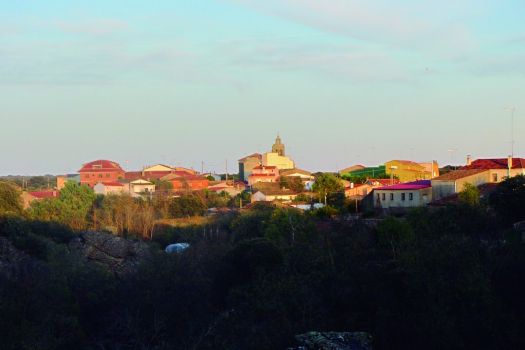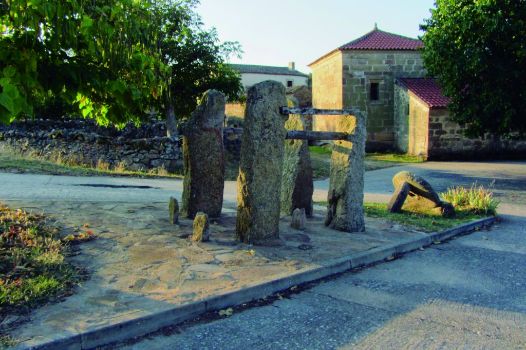Net of Natural
Trails

Stage 28: Fariza - Mámoles
Description
The old route of the muleteers
A short walk in good company. Ashes provide shade and the chirping of chickadees and blue tits bring joy to this Stage.

The Stage begins next to the parish church of San Julian in the town of Fariza. The 13th century church has undergone many reforms over the years. The semi-walled up façade on the south side is the only Romanesque element remaining. One can still see a Roman stele on this façade.
The Trail leaves the town of Fariza, heading down the so-called "Route of the Muleteers", a wide track bordered by stone walls. One can probably see donkeys, horses and cows along the route.
A short, rock-covered rise allows one to look back on the town of Fariza, where the Stage began.
This stretch is populated with ash groves that grow in the cooler and shadier areas, interspersed with pastures where livestock graze.

Further one, the route turns sharply to the left, onto a track that ventures into a different landscape. The fenced lands give way to a wild stretch of terrain with a scattering of holm oaks (Quercus ilex) and abundant flax-leaved daphne (Daphne gnidium).
The route descends slightly a few meters ahead, while granite outcrops appear and the vegetation gets denser. Large holm oaks with an undergrowth of aromatic herbs appear first. Shortly after, the oaks are more scrub-like and interspersed with prickly junipers (Juniperus oxycedrus) and low shrubs.
The Trail reaches and crosses Prado Creek to continue towards a path leading to Casito de la Boiza, a viewpoint. The route climbs up to a place known as El Cotorrón through scrubland, mostly holm oak, juniper and gorse (Genista scorpius) or "aliaga", as it is called locally.

The Booted Eagle (Hieraaetus pennatus) flies over the slopes during the day hoping to spot and hunt rabbits (Oryctolagus cuniculus), or more frequently, ocellated lizards (Lacerta lepida). When the sun goes down, and darkness covers the land, the common genet (Genetta genetta) hunts sleeping birds or preys on rabbits near their burrows. The elusive garden dormice (Eliomys quercinus) and field mice (Apodemus sylvaticus) also roam the woods foraging for nuts and acorns.
A granite shoeing crush and the parish church of San Pedro Apóstol are the two notable local heritage items that welcome the traveller to this town with Romanesque-style structures, and the endpoint of this Stage of the Duero Nature Trail.
Enlaces de interés
Profile

Highlights
Further information
The Zamoran-Leonese donkey
The Zamoran-Leonese donkey is a docile and good-natured breed native to Spain, and highly resistant to climate shifts. It is characterised by abundant, long hair that was used to make blankets in the past.
It belongs to the European donkey breeds, very similar to the French Poitú. It is also related to the Catalan donkey and the Basque Encartaciones.
Originally, the Zamoran donkey was found throughout the Cantabrian Mountains, Castile La Mancha, and Castile and León; however, only a few of them have survived.
Low breeding rates is the main problem facing this breed. Out of 1,100 breeding pairs, only one-fourth are actually breeding.
Flax-leaved daphne
The flax-leaved daphne is a shrub with amazing properties. It has been used for centuries as a good luck charm and protection against evil spirits. In some areas of Zamora, it is customary to tie a strap of flax-leaved daphne to a lamb's tail as a means to remedy stomach ailments. It is also valued as an insecticide for chicken coops, keeping the hens free from chicken mite.
This plant species has also been used, since time immemorial, to fish in lakes and streams, because its toxic resin removes oxygen from the water. A few branches thrown into the water poison the fish. Two or three hours later, one only has to harvest the floating fish. This form of fishing is called "entorviscar", and it is obviously forbidden.




